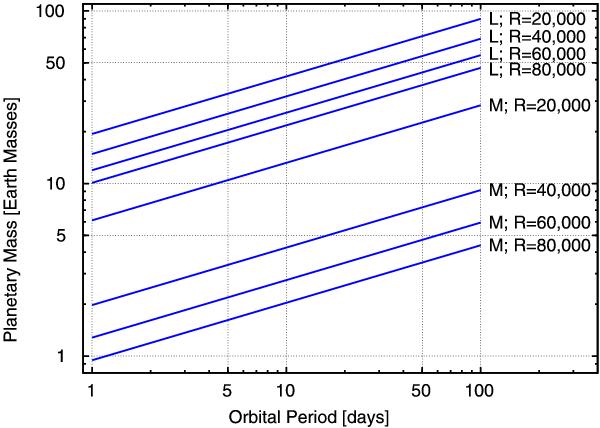Fig. 7

Minimum masses of the planetary companions with respect to the orbital periods and the RV precisions, which are a function of the spectral resolving power R. For the late M-dwarf (in the plot marked with “M”) we assumed a mass of 0.075 M⊙ and a projected rotational velocity of vsini = 5 km s-1. We calculated the masses by adopting Eq. (4) and the RV precision we had determined for different spectral resolving powers (R = 20 000, 40 000, 60 000 and 80 000) in the Y band with a SNR of 80 in the spectral continuum. We demonstrate that planetary companions with short periods and slightly higher masses than the Earth can be detected when taking observations at high spectral resolving powers. For the L-dwarf (marked with “L”) with a temperature of 1800 K, we assumed a mass of 0.07 M⊙ and a projected rotational velocity of vsini = 20 km s-1. As result, we find that hot Neptunes can be detected when observations are taken in the J band, with a spectral resolving power of R ≥ 60 000 and a SNR of 45 in the spectral continuum.
Current usage metrics show cumulative count of Article Views (full-text article views including HTML views, PDF and ePub downloads, according to the available data) and Abstracts Views on Vision4Press platform.
Data correspond to usage on the plateform after 2015. The current usage metrics is available 48-96 hours after online publication and is updated daily on week days.
Initial download of the metrics may take a while.


